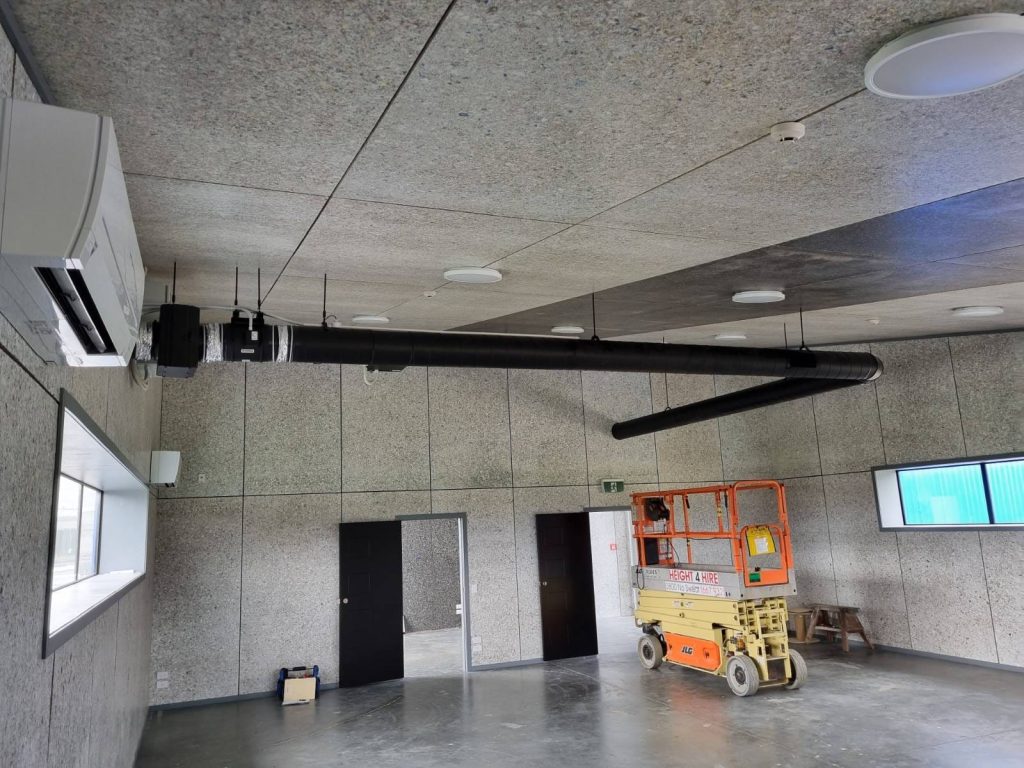If you have a home where one area is consistently warmer than the rest, a heat transfer system could be the key to balancing temperatures and improving overall comfort. These systems make use of heat that already exists within your home, redistributing it to cooler rooms for a more even and efficient form of heating.
In this guide, we explain how heat transfer systems operate, why they are an effective energy saving solution, and how they can complement your existing heating setup.
What Is a Heat Transfer System?
A heat transfer system is designed to move warm air from one space to another within your home. Rather than producing new heat, it captures excess warmth from areas that tend to overheat, such as living rooms with wood burners or heat pumps and distributes it through insulated ducts to cooler rooms like bedrooms or hallways.
The system usually consists of three main components: a fan unit, insulated ducting, and discreet ceiling or wall vents. The fan draws in warm air, pushes it through the ducting, and releases it evenly into other rooms.
Because it reuses existing warmth, a heat transfer system reduces the need for additional heaters and helps your main heating source work more efficiently.
How Heat Transfer Systems Circulate Warm Air
The process is simple but effective. When a heat source in your home, for example, a fireplace or heat pump raises the temperature in one room, sensors detect the warm air. Once the air reaches a set temperature, the fan unit activates and begins drawing the warm air through ducts to other selected areas.
The system runs quietly and automatically, ensuring a consistent level of warmth without noticeable drafts. Some advanced models allow for adjustable fan speeds or thermostatic control, giving you the ability to fine tune air distribution according to your household’s comfort levels.
Improving Home Heating Efficiency
Heat transfer systems enhance the efficiency of your overall home heating strategy. Instead of allowing valuable warm air to collect in one room, the system ensures that heat is shared more evenly throughout your home.
By reducing the temperature difference between rooms, your main heat source doesn’t have to work as hard to maintain comfort. This balanced approach not only improves energy efficiency but can also lower your electricity or fuel costs over time.
These systems are particularly useful in homes with open plan living areas where heat naturally rises and pools in high ceilings. By redistributing that trapped warmth, the system maximises every bit of heat you generate.
Installation and Maintenance
Installing a heat transfer system typically involves placing a fan unit in the ceiling space and running insulated ducts to the rooms you want to heat. The number of outlets depends on your home’s size and layout. A qualified installer will assess your property to determine airflow direction, duct length, and outlet placement for optimal performance.
Maintenance is minimal, but it is recommended to check filters and vents periodically to ensure unobstructed airflow. Keeping the fan unit clean and the ducts sealed helps maintain efficiency and prolongs system life.
A Smart Addition to Your Heating Setup
A heat transfer system is not a replacement for your main heat source but an enhancement to it. When combined with good insulation, proper ventilation, and an efficient heating appliance, it creates a balanced, cost-effective, and comfortable home environment.
If you often find one part of your house too warm and another too cold, this system offers a practical and energy conscious solution.
Ready to make your home more comfortable and energy efficient?
Speak with the experts at Comfort Group. With over 25 years of experience in heating and cooling solutions, their team can help you design and install a heat transfer system tailored to your home’s layout and needs.


